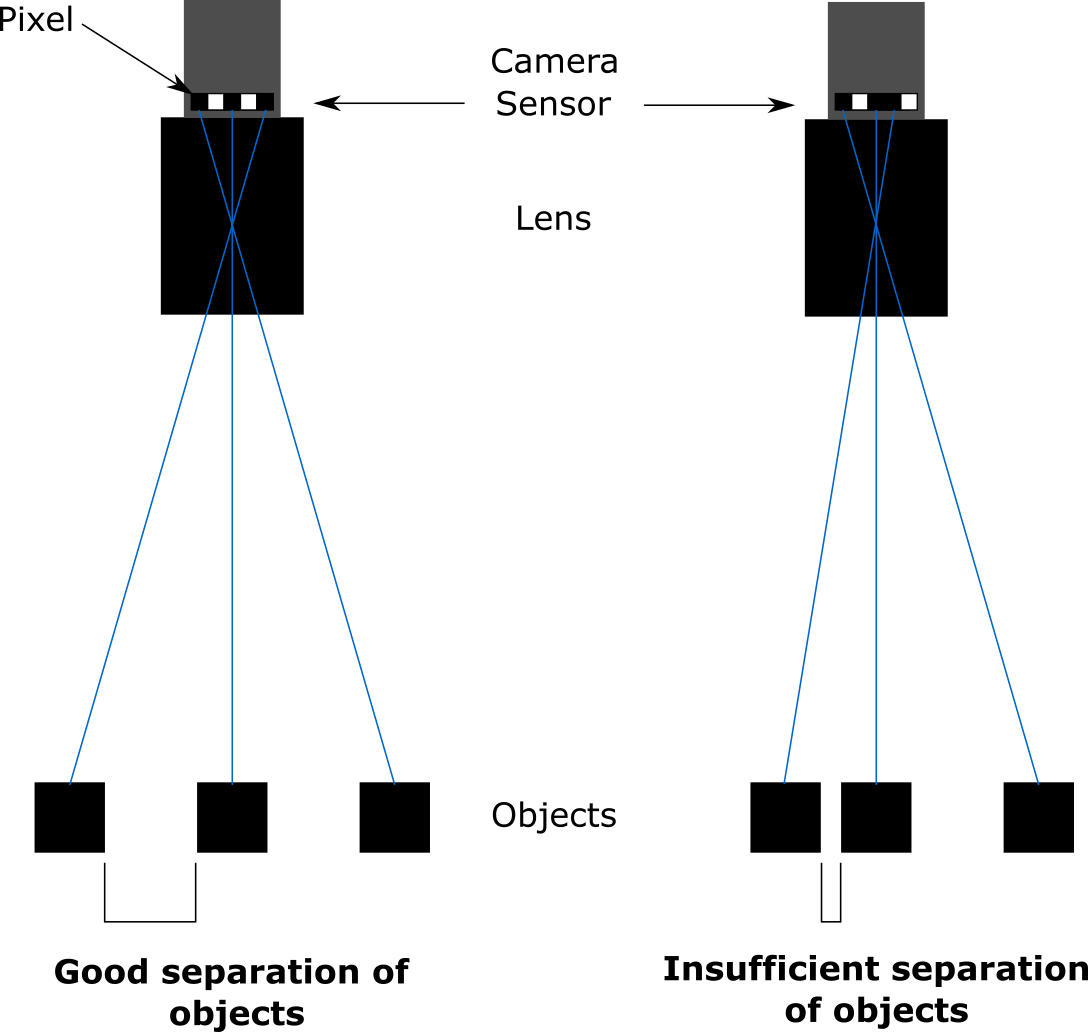Imaging System - Overview
The combination of Camera, Sensor, Optics and lighting is refereed to as an Imaging Systems. This section will describe the most important parameters and the effect they have on your data.
Fundamental Parameters of an Imaging System

Above, shows a sketch of an imaging system. The lens, in combination with the camera, has a specific field of view at a certain working distance. The depth of field is the area in which a target, in this case the focus target, is considered to be in focus.
Working Distance (WD)
The distance from the lens to the object, more.
Field of View (FOV)
The visible area at a given distance in which an object can be inspected. The FOV is defined by the Working Distance (how far away the object or the arena is), the Focal Length of the lens and the size of the camera sensor.
- The larger the Focal Length the more narrow the angle of view will be (the more "zoomed in" the image is)
- The larger the camera sensor, the more wide angle the angle of view will be (the more "zoomed out" the view will appear)
- The closer the FOV is to the camera the smaller it will be
Depth of Field (DOF):
The depth of the field is the area in which an object is considered to be in focus (away from the camera).

On the left a shallow Depth Of Field, on the right a deep Depth of Field
The most significant effect one has on the DOF is how open or closed the aperture is.
- The more closed the aperture of a lens the deeper the DOF
- The further away an object or arena that is focused is the deeper the DOF
- The larger the camera pixels are the deeper the DOF
- The shorter the focal length of a lens, the deeper the DOF
Minimal Operating Distance (MOD):
The minimal distance between the lens and the object at inspection at which the object can be focused. Parameter of the optics.
Resolution
The minimal size of an object that can be distinguished from another object of the same size. This is a function for several parameters, one of which is the camera sensor resolution, the size of the pixels and the quality of the lens.

If the space in between objects is too small (right) then the camera sensor will not be able to resolve them as separate objects
Frame Rate
The frequency at which images are acquired. Specified by the frame rate of the camera and the maximal frame rate of the recording system/codec.
Errors and Artifacts in Imaging Systems
Motion Blur
Motion blur occurs if an object moves (fast) and the camera is set to a long exposure time. If an object moves wile the camera is taking an image, the resulting image in the projection of the object on the camera sensor, moves across several pixels.
Reducing the exposure time eliminates this artifact but requires more light.